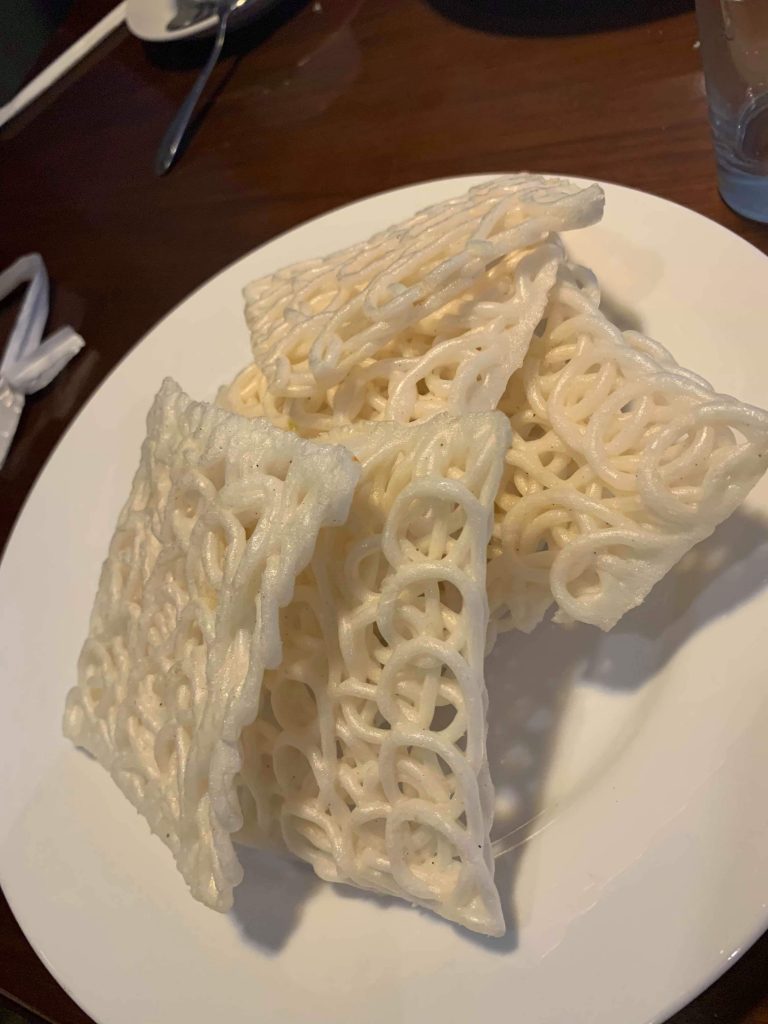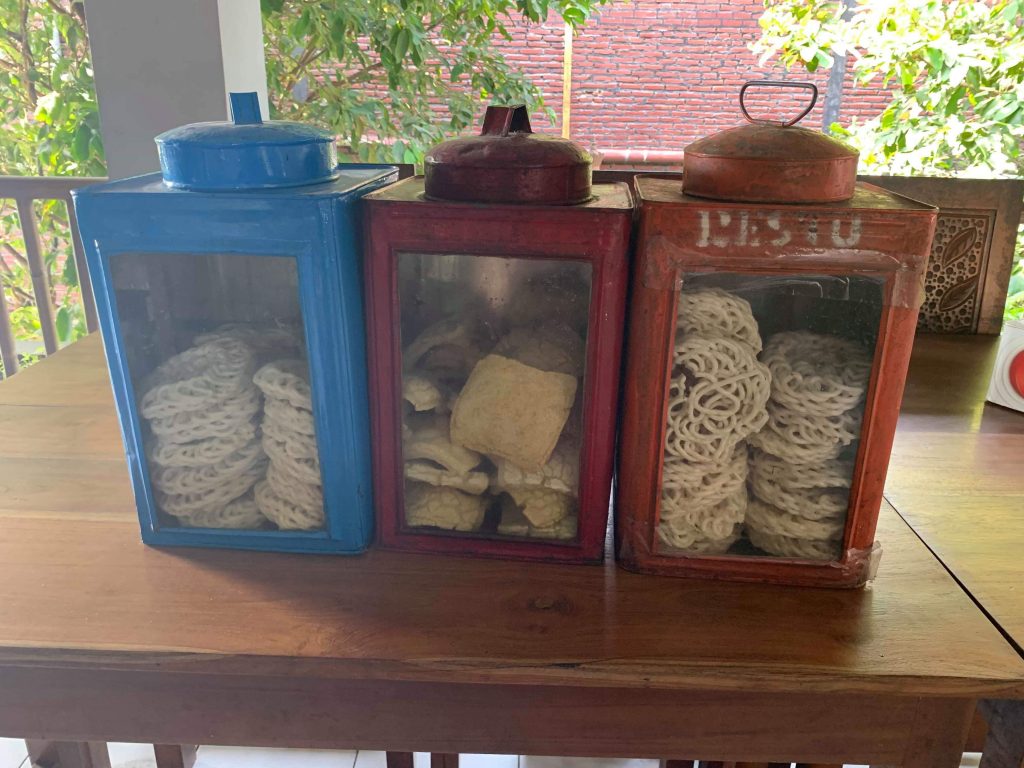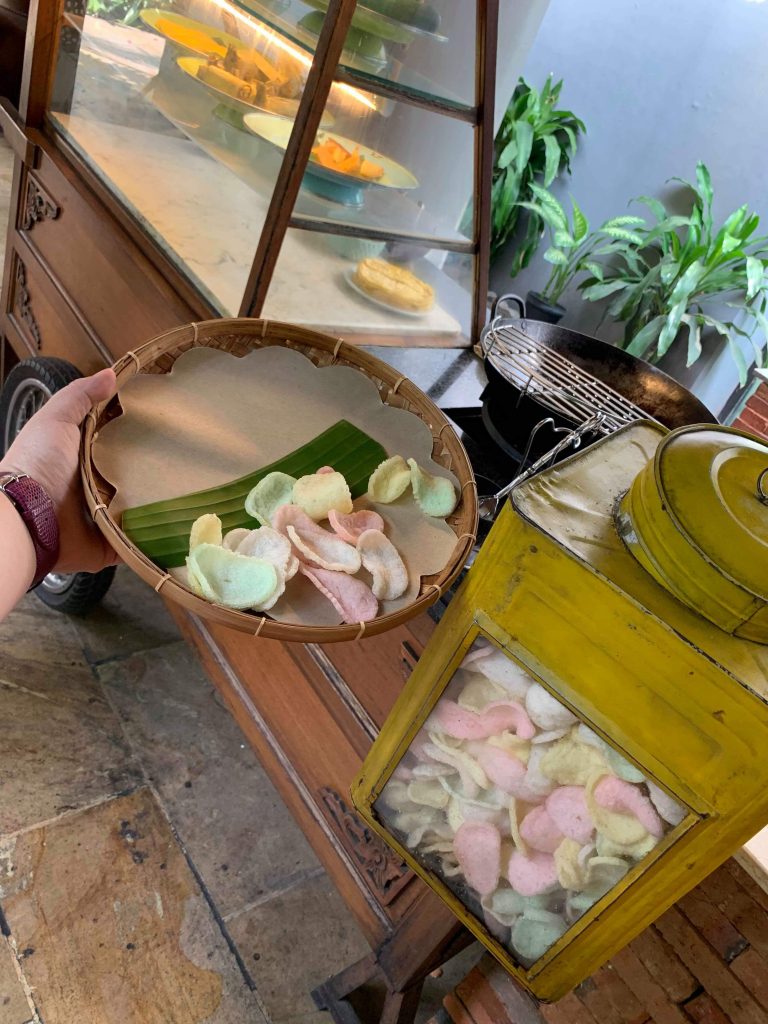
It’s not just snaps and memories we take when we travel — calories too. And a recent soul-searching trip in Indonesia gave me an insightful look at the crunchy world of krupuk. Or kropek, if you may.
Indonesia probably has the largest variety of krupuk. For one, the kinds of krupuk they have in Indonesia are just way up there in the taste level than what we have here.
Overwhelming may be an understatement.

The Indonesian variety are colorful, bigger and has that distinctive taste that makes you want to eat more. Each krupuk creations differ from one place to another.
Krupuk Trivia: In Indonesia, the etymology of the term krupuk is actually an onomatopoeia that describes the crunch sound it makes when you take a bite.
It is mostly served as a complementary side dish for breakfast, lunch and dinner. Others prefer these crunchy delights as snacks. Come to think of it, the krupuk is probably the most popular of Indonesia’s many oleh-oleh (pasalubong).
We’ve always paired our kropek counterpart with vinegar and crushed garlic. The flavour combination, coupled with the crackling sound, for us, gives it its identity. A plate of freshly cooked krupuk often goes well during nights with friends. The instant craving satisfaction, affordability and availability makes it a hit to most of us.

In Indonesia, any meal won’t be complete without it. Stored in colorful airtight tin cans or wrapped in plastics, the first thing you’d see on the dining table is the krupuk.
Accordingly, certain Indonesian dishes require a certain type of krupuk (for toppings). And as such, it is the very first thing that the servers would offer you.
Krupuk is usually made from a dried paste mixture mostly composed of starch (cassava, rice, flour). Aside from the plain variety, it also has other flavors — fish, garlic and shrimp to name a few.
Most often, the krupuk acts as an appetizer to a big meal. Considering Indonesia’s saucy dishes, that instant pop in the mouth awakens the taste buds. Sometimes, the krupuk, because of its oily texture, cleanses the palate.

Aside from it being a craving satisfier, it also doubles as a viand. Yes, as an ulam. It was really fascinating to see locals eat krupuk together with rice. Well, for the most part, Indonesia is also known for a splendid selection of fried rice. So, a plate of nasi uduk (mixed fried rice) and krupuk is enough — even for me.
Others even crush and sprinkle bits of the krupuk on top of dishes as a complement to the addition of a crispy, layered texture.
Since most of the dishes in Indonesia are with sabaw or sauce laden, dipping the krupuk is another way to enjoy it. It also doubles as a scoop.
I’ve tried the rice-krupuk and the rice-viand-krupuk combo and I can say that the sensation in the palate is pleasingly awesome. But for me, the sabaw – krupuk combo is the best.
Thank you to Zamboanga’s Ansheva Susulan for sharing her photos.






